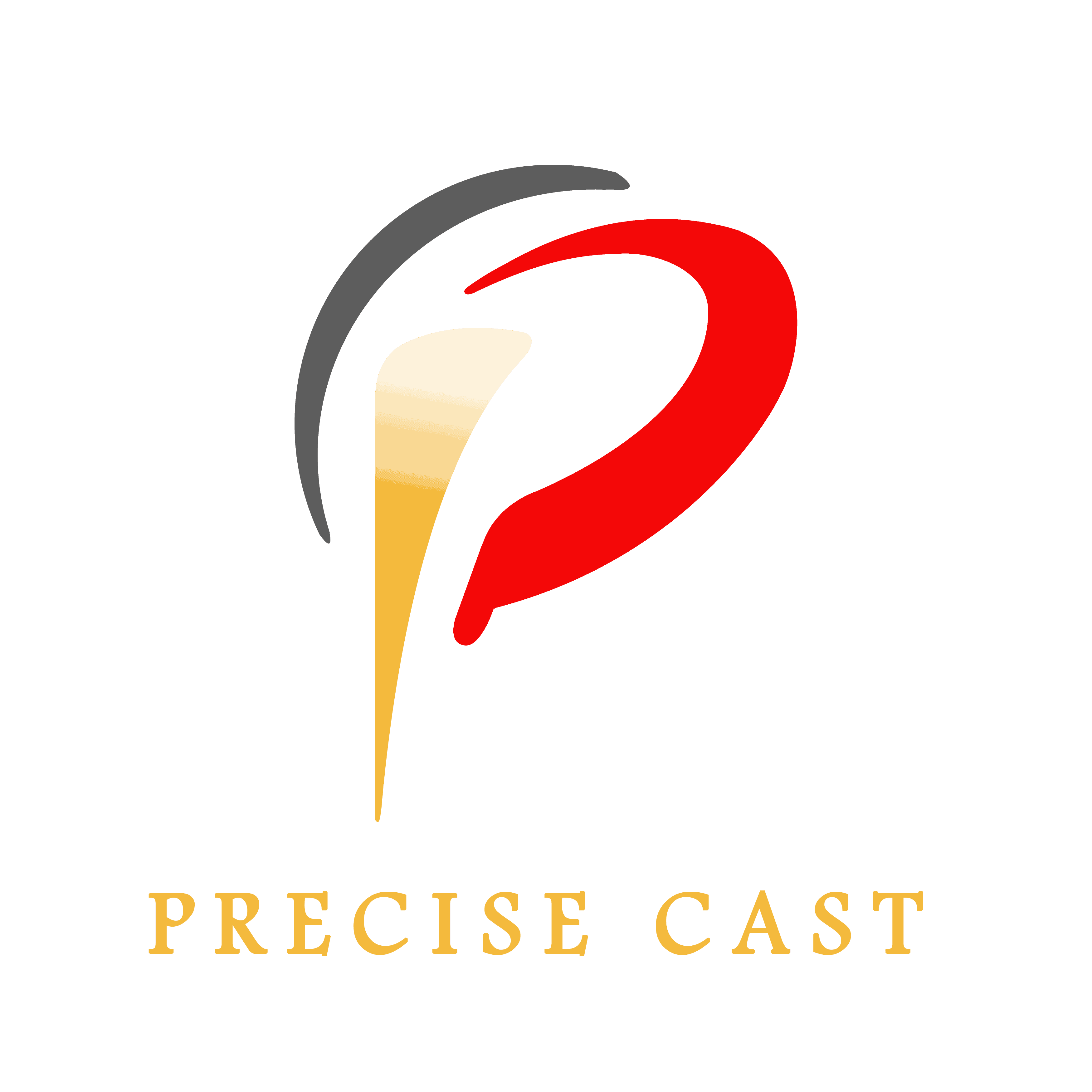Classification of Casting Process
- Sand Casting
- Shell Mold Casting
- Investment Casting
- Die Casting
- Low Pressure Casting
- Centrifugal Casting
- Gravity Casting
- Vacuum Casting
- Squeezing Casting
- Lost Foam Casting
- Continual Casting
Sand Casting
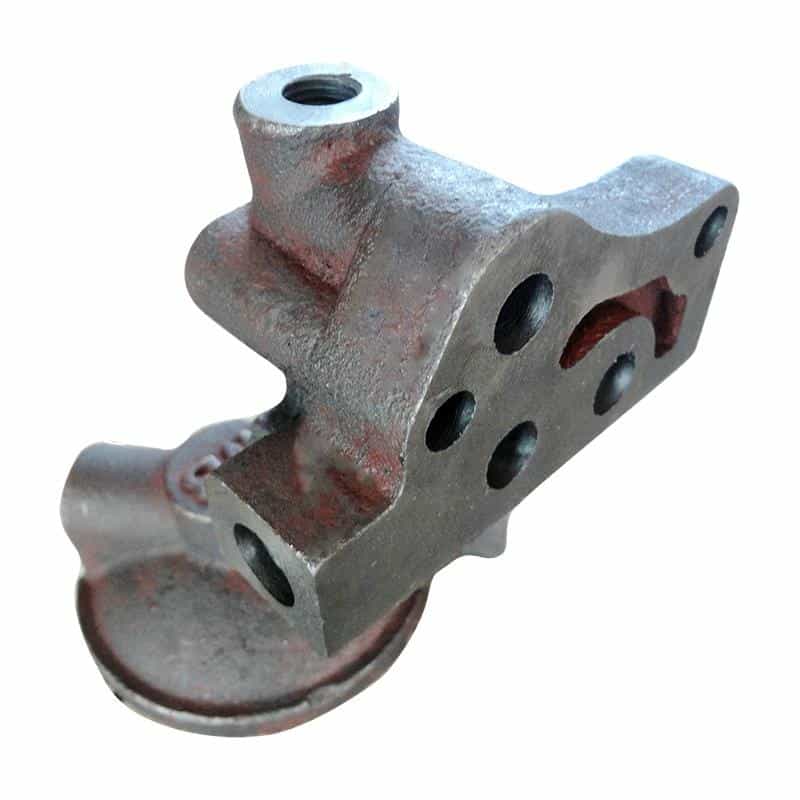
Casting method for manufacturing castings in the sand mold. Steel, iron, and most non-ferrous alloy castings can be obtained by sand casting.
Process Flow:
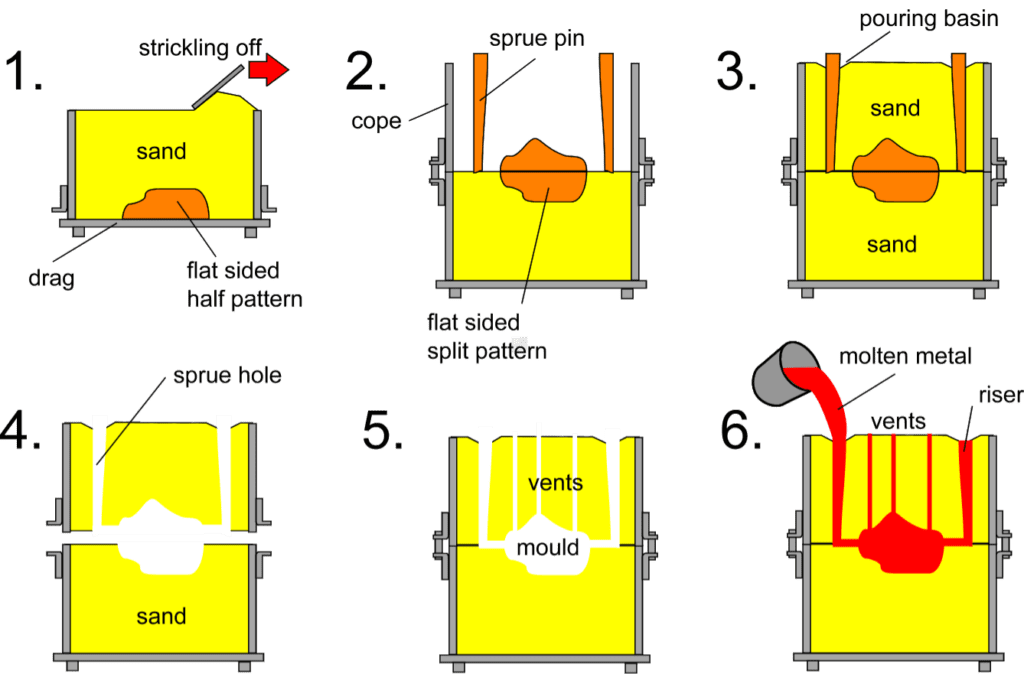
Technical Features:
- Suitable for making blanks with complex shape, especially with complex inner cavity;
- Wide adaptability and low cost;
- For some materials with poor plasticity, such as cast iron, sand casting is the only forming process to manufacture the parts or blanks.
Application:
Automotive engine cylinder block, cylinder head, crankshaft and other castings.
Shell Mold Casting

Shell Mold Casting is a consumable mold casting process, that is, molten metal is poured into a disposable mold. The resin-covered sand is covered on the heated reusable metal mold to harden it into a thin mold shell and then heat and solidify the thin mold shell to achieve sufficient strength and stiffness. Therefore, after the upper and lower mold shells are clamped with clamps or glued with resin, a disposable mold can be formed.
Process Flow:
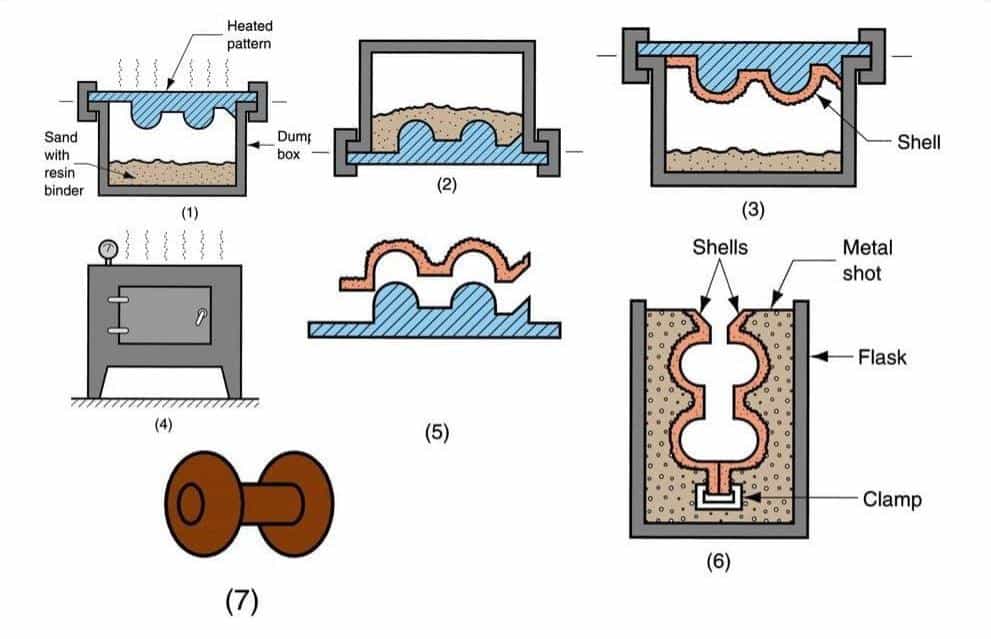
Technical Features:
Advantages:
- Can realize automated mass production;
- Good surface finish and machining accuracy that can reduce subsequent machining costs;
- Large parts and complex shapes can be produced;
- Low mold cost and less waste generated.
Disadvantages:
- The resin used in shell mold casting is expensive;
- The reusable metal mold must be precision machined with high cost;
- Irritant gas is generated during the pouring;
- Poor strength castings with high porosity.
Application:
Suitable for producing various small and medium-sized alloy castings with large batches, high dimensional accuracy, thin wall, and complex shape, such as cylinder head, connecting rod, manifold, etc.
Investment Casting
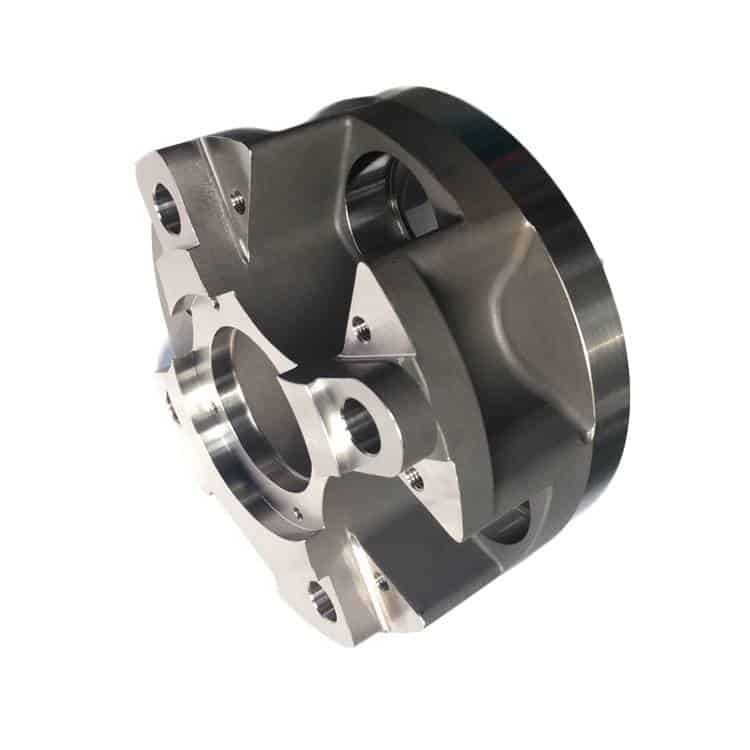
It usually refers to a casting scheme in which the fusible material is made into a pattern, several layers of refractory materials are coated on the surface of the pattern to make a mold shell, and then the pattern is melted out of the mold shell, so as to obtain a mold without parting surface, which can be filled with sand after high-temperature roasting. It is often called “lost wax casting”.
Process Flow:
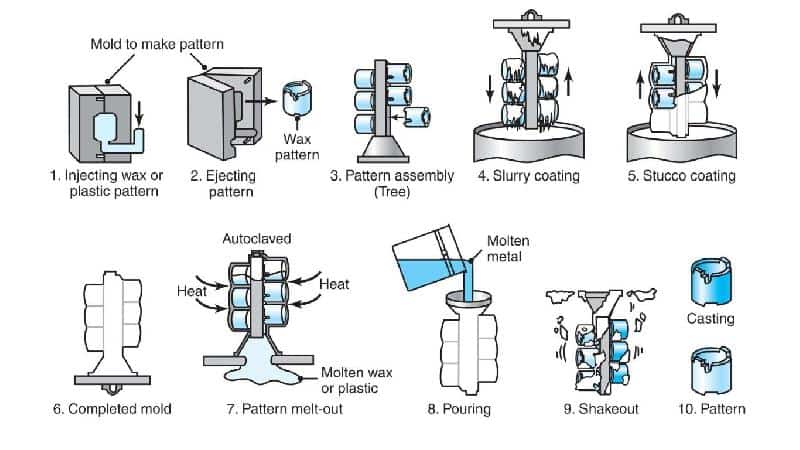
Technical Features:
Advantages:
- High dimensional and geometric accuracy;
- High surface roughness;
- Able to cast complex castings, and the cast alloy is not limited.
Disadvantages:
Complicated process and high cost.
Application:
Suitable for manufacturing small parts with complex shapes, high precision requirements, or other processing difficulties, such as turbine engine blades.
Die Casting
High pressure is used to press the molten metal into a precision metal mold cavity at high speed, and the molten metal is cooled and solidified under pressure to form castings.
Process Flow:
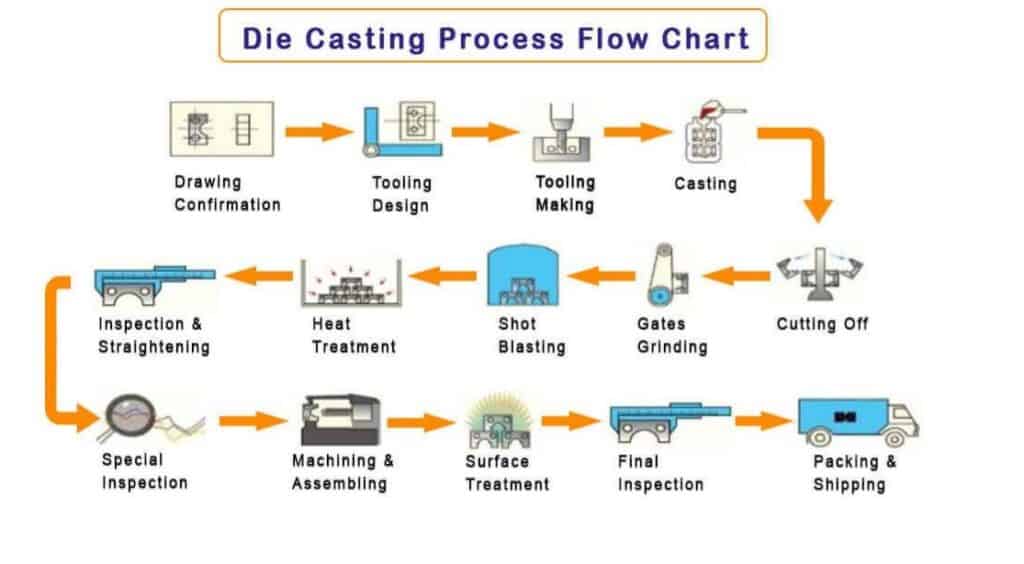
Technical Features:
Advantages:
- Molten metal bears high pressure and high flow rate;
- High product quality, stable size and good interchangeability;
- High production efficiency and long service life of die casting mold;
- Suitable for mass production with good economic benefits.
Disadvantages:
- Castings are prone to small pores and shrinkage porosity;
- Not suitable to work under impact load and vibration, due to the low plasticity of die castings;
- High melting point alloy die casting could reduce the service life of the die casting mold and affect the expansion of die casting production.
Application:
Die castings were first used in the automobile industry and instrument industry, and then gradually expanded to various industries, such as agricultural machinery, machine tool industry, electronics industry, national defense industry, computer, medical equipment, clocks, cameras, daily hardware, and other industries.
Low Pressure Casting
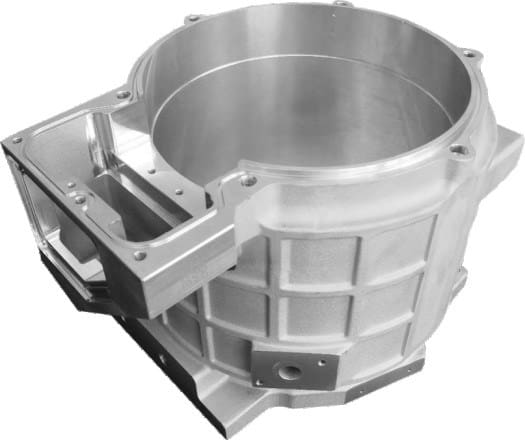
It refers to the method of filling the mold with molten metal under lower pressure (0.02~0.06MPa) and crystallizing under pressure to form castings.
Process Flow:
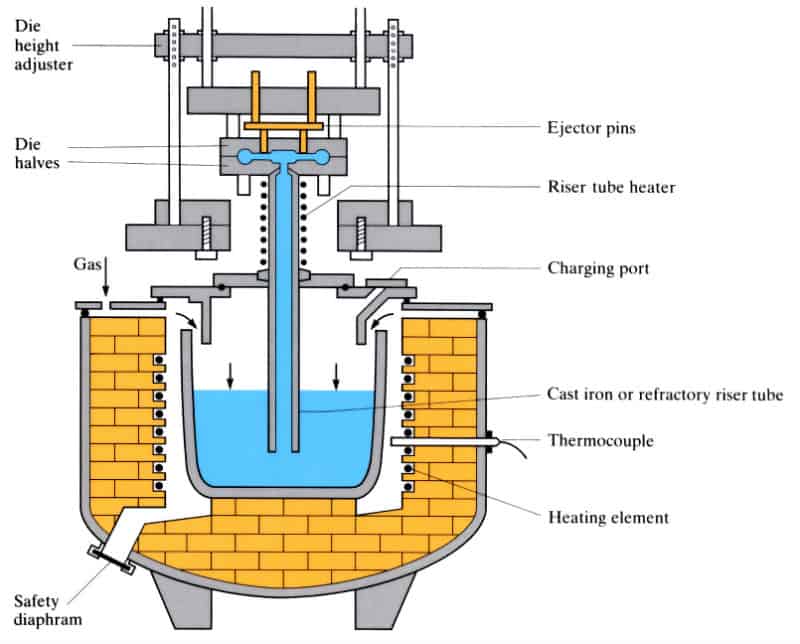
Technical Features:
- The pressure and speed during pouring can be adjusted, so it can be applied to a variety of different casting molds (metal molds, sand molds, etc.), suitable for casting various alloys and castings of various sizes;
- Bottom injection type filling is adopted, the filling of molten metal is stable and free of a splash, which can avoid the entrapment of gas and the scouring to the mold wall and core, which improves the qualified rate of castings;
- Castings crystallize under pressure, with a compact structure, clear outline, smooth surface, and high mechanical properties, which is particularly beneficial to the castings with large and thin walls;
- The feeding riser is omitted, and the metal utilization rate is increased to 90 ~ 98%;
- Low labor intensity, good working conditions, simple equipment, and easy to realize mechanization and automation.
Application:
Mainly traditional products (cylinder head, wheel hub, cylinder frame, etc.).
Centrifugal Casting
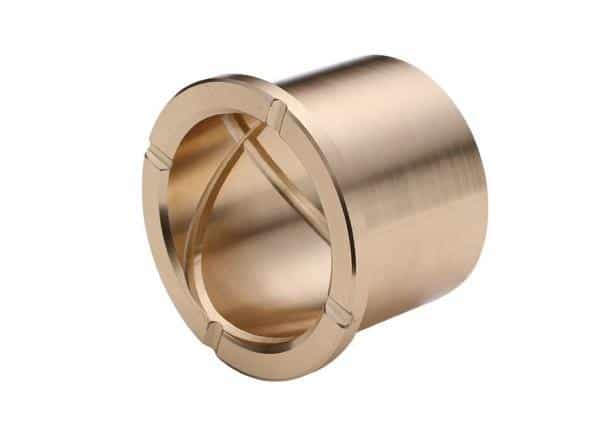
A casting method in which molten metal is poured into a rotating mold, and the mold is filled under the action of centrifugal force to solidify the molten metal into shape.
Process Flow:
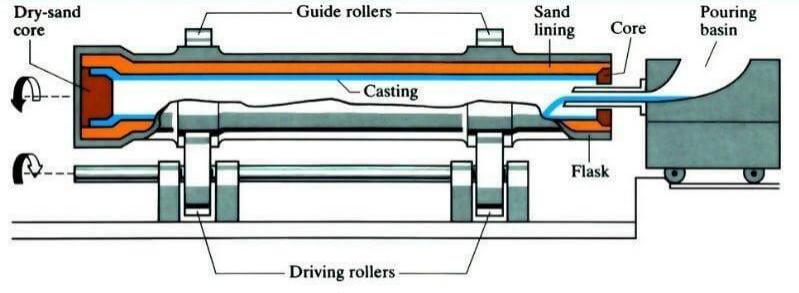
Technical Features:
Advantages:
- There is almost no metal consumption of gating system and riser system to improve the process yield;
- The mold core is unnecessary in the production of hollow castings, so the metal filling capacity can be greatly improved in the production of long tubular castings;
- Fewer pores, slag inclusions, and other defects, high density and high mechanical properties of castings;
- Convenient to manufacture barrel and sleeve composite metal castings.
Disadvantages:
- There are certain limitations in the production of special-shaped castings;
- Poor casting quality, inaccurate inner hole diameter, rough inner hole surface, and large machining allowance;
- Castings are prone to specific gravity segregation.
Application:
Centrifugal casting was first used to produce cast pipes. The centrifugal casting process is used in metallurgy, mining, transportation, drainage and irrigation machinery, aviation, national defense, automobile, and other industries to produce steel, iron, and non-ferrous carbon alloy castings. Among them, centrifugal cast iron pipe, cylinder liner, and shaft sleeve of the internal combustion engine are the most common.
Gravity Casting
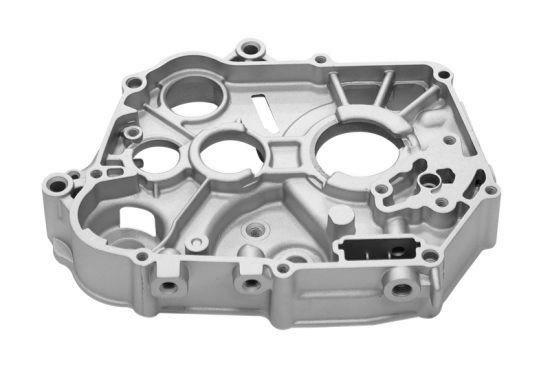
It refers to a forming method in which molten metal is filled with a metal mold under the action of gravity and cooled and solidified in the mold to obtain castings.
Process Flow:
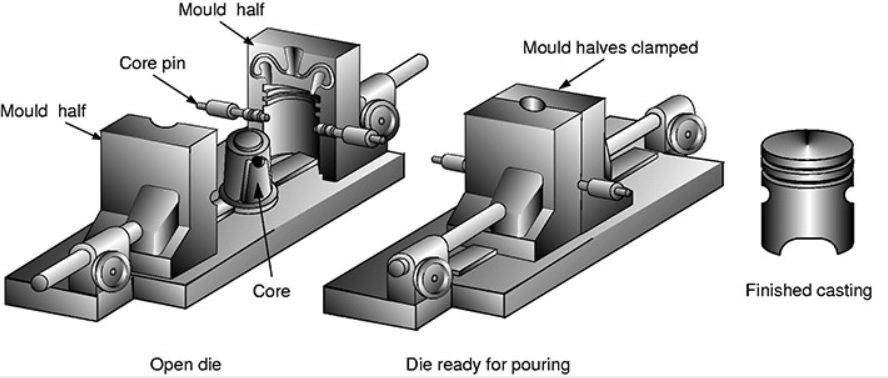
Technical Features:
Advantages:
- Large thermal conductivity and thermal capacity of the metal mold, fast cooling speed, dense casting structure, and mechanical properties are about 15% higher than the sand casting parts;
- Castings with high dimensional accuracy and low surface roughness with good quality stability;
- Since the sand core is not used or rarely used, it can improve the environment, reduce dust and harmful gases, and reduce labor intensity.
Disadvantages:
- The metal mold itself has no air permeability, so certain measures must be taken to drain the air in the cavity and the gas generated by the sand core;
- The metal mold is not deformable, and the casting is prone to cracks when it is solidified;
- Long manufacturing cycle and high production cost of the metal mold can show well economic effect only in mass production.
Application:
Gravity casting is not only suitable for mass production of non-ferrous alloys such as aluminum alloy and magnesium alloy castings with complex shapes, but also suitable for the production of iron and steel metal castings and ingots.
Vacuum Casting
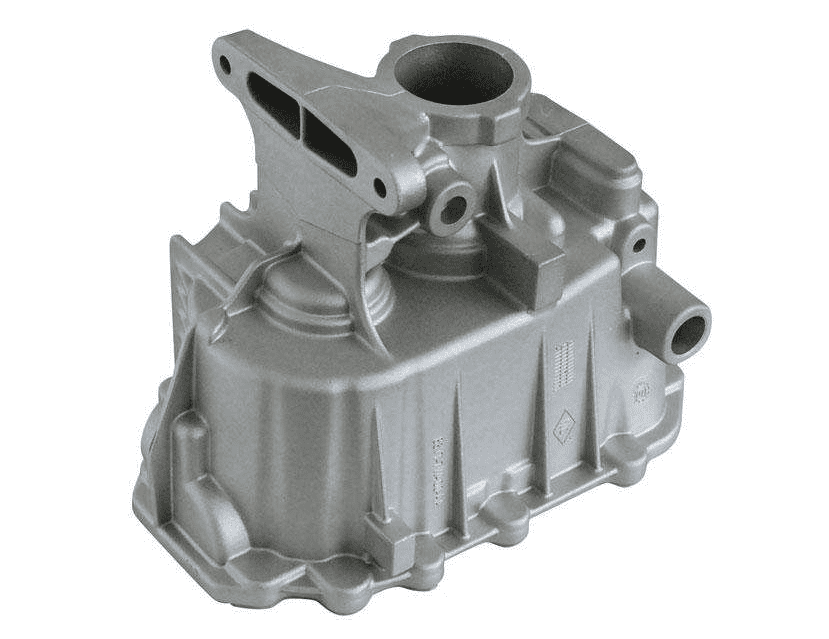
An advanced casting process that eliminates or significantly reduces the pores and dissolved gases in the casting parts by extracting the gas from the casting mold cavity during the casting process, thereby improving the mechanical properties and surface quality of the casting parts.
Process Flow:
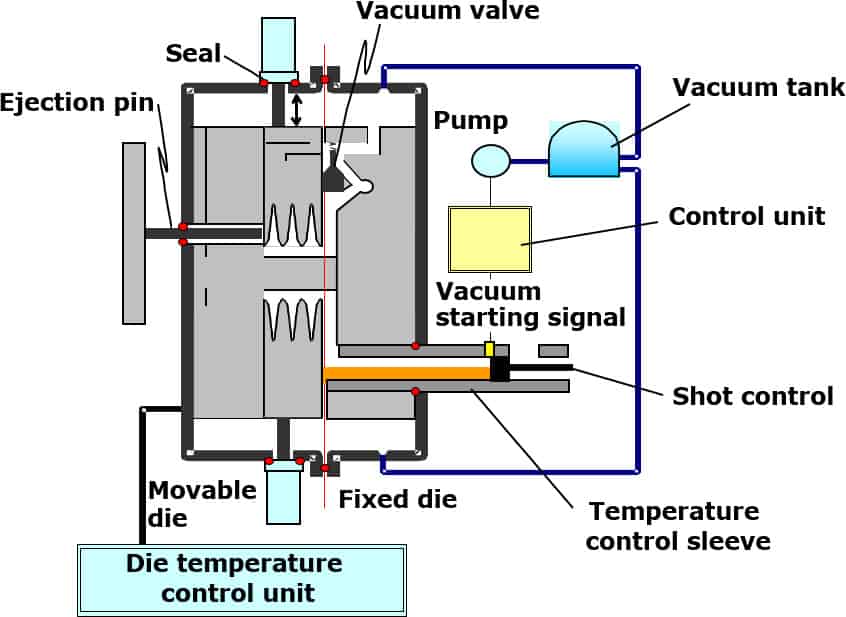
Technical Features:
Advantages:
- Eliminate or reduce the pores inside the castings, improve the mechanical properties and surface quality of the castings, and improve the plating performance;
- Reduce the back pressure of the cavity, the alloy with low specific pressure and poor casting performance can be used, and it is possible to cast large castings with small machines;
- The filling conditions are improved, and the castings with thinner wall thickness can be manufactured.
Disadvantages:
- Higher cost, due to the complex sealing structure of the mold, it is difficult to manufacture and install.
- The effect is not very significant if the vacuum casting method is improperly controlled.
Squeezing Casting
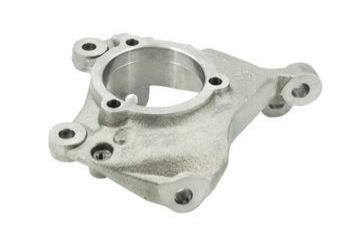
It is a method of solidification and flows forming of liquid or semi-solid metal under high pressure to directly obtain parts or blanks. It has the advantages of the high utilization rate of liquid metal, simplified process, and stable quality. It is an energy-saving metal forming technology with potential application prospects.
Process Flow:
Direct Squeeze Casting:
coating spraying, alloy pouring, mold closing, pressurization, pressure maintaining, pressure relief, mold splitting, blank de-molding, and resetting;
Indirect Squeeze Casting:
coating spraying, mold closing, feeding, mold filling, pressurization, pressure holding, pressure relief, mold splitting, blank de-molding, and resetting.
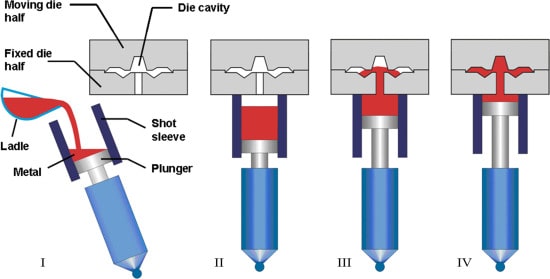
Technical Features:
- Can eliminate internal defects such as pores, shrinkage holes, and shrinkage porosity;
- Low surface roughness and high dimensional accuracy;
- Can prevent casting cracks;
- Easy to realize mechanization and automation.
Application:
It can be used to produce various types of alloys, such as aluminum alloy, zinc alloy, copper alloy, ductile iron, etc.
Lost Foam Casting
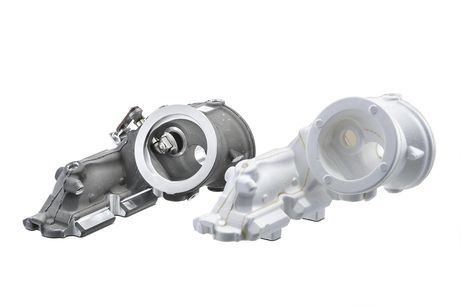
Lost Foam Casting (also known as Full Mold Casting):
It is a new type of casting method that bonds and combines the paraffin wax or foam models similar in size and shape to the castings into the model clusters. After brushing and drying the refractory coating, bury it in dry quartz sand for vibration modeling, pouring under negative pressure to gasify the model, the liquid metal occupies the position of the model and forms a casting after solidification and cooling.
Process Flow:
pre foaming→foaming molding→dipping coating→drying→
modeling→pouring→sand dropping→cleaning
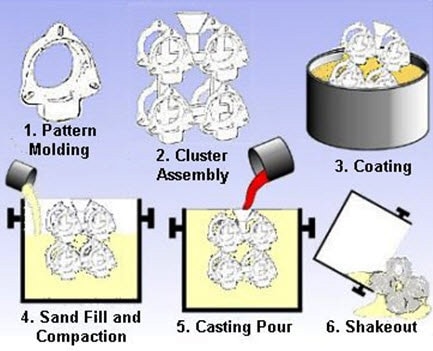
Technical Features:
- High precision castings, no sand core is required, so the processing time is saved;
- No parting surface, flexible design, and high design freedom;
- Clean production without pollution;
- Reduce investment and production costs.
Application:
Suitable for producing precision castings of various sizes with complex structure, unlimited alloy types and production batches. Such as gray cast iron engine box, high manganese steel elbow, etc.
Continual Casting
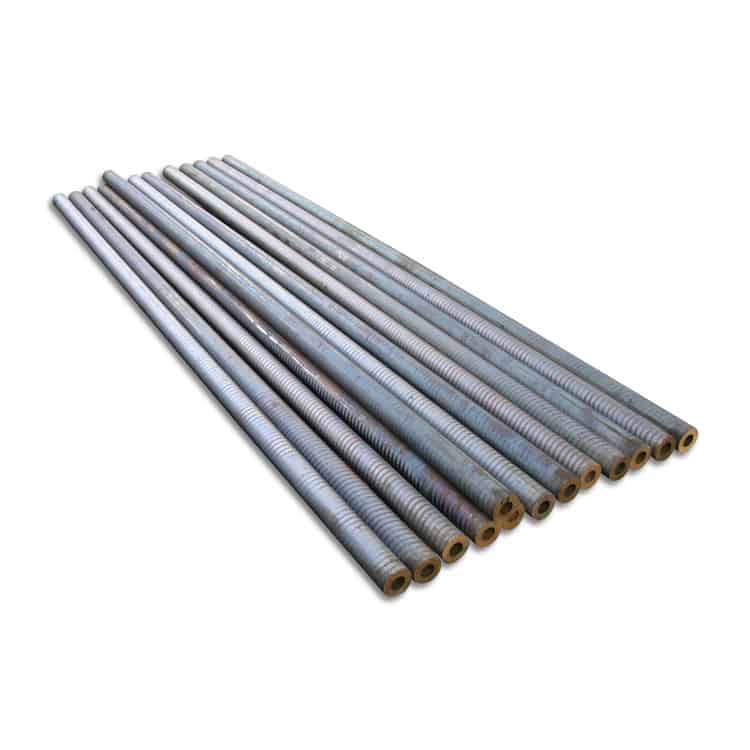
Continual Casting is an advanced casting method, the principle is to continuously pour molten metal into a special metal mold called a crystallizer. The solidified (crusted) casting is continuously pulled out from the other end of the crystallizer. Castings of any length or specific length can be obtained by this casting method.
Process Flow:
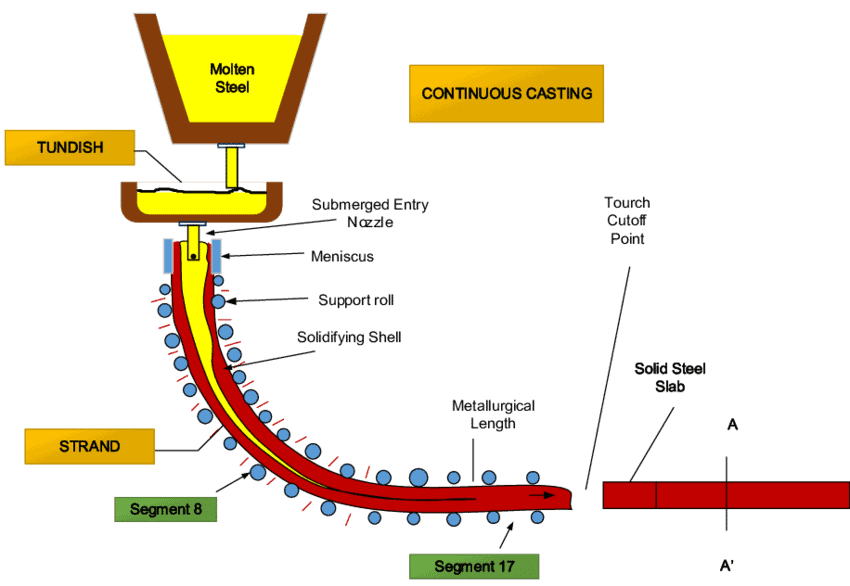
Technical Features:
- ense crystal, uniform structure, and good mechanical properties, as the metal is rapidly cooled;
- Save metal and increase yield;
- Simplified process, eliminating modeling and other processes, decreasing labor intensity, and greatly reducing the required production area;
- Easy to realize mechanization and automation, improve production efficiency.
Application:
Continual casting method can be used to cast steel, iron, copper alloy, aluminum alloy, magnesium alloy, and other long castings with unchanged section shapes, such as ingots, slabs, bar blanks, pipes, etc.
